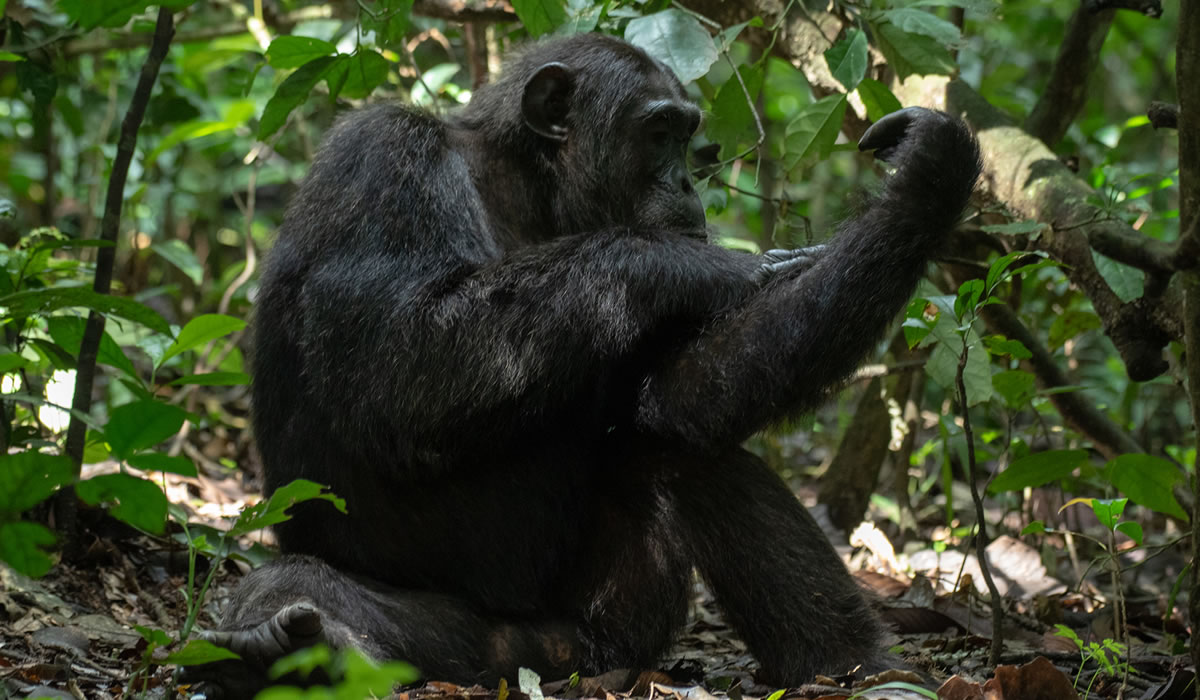Kibale Forest National Park, often referred to as Uganda’s primate capital, is one of the most enchanting and biologically diverse protected areas in East Africa. Located in western Uganda near the town of Fort Portal, Kibale covers an area of approximately 795 square kilometers and is renowned for its rich biodiversity, lush tropical rainforest, and extensive primate populations. This park is a must-visit destination for wildlife enthusiasts, researchers, bird watchers, and travelers looking to experience a unique rainforest ecosystem. Kibale’s combination of dense forests, rolling hills, and swampy areas creates a haven for an extraordinary variety of flora and fauna, making it one of Uganda’s top eco-tourism destinations.

Kibale Forest National Park is globally famous for its primate diversity, earning it the title of Uganda’s primate capital. The park hosts 13 species of primates, including chimpanzees, red-tailed monkeys, black-and-white colobus monkeys, blue monkeys, and grey-cheeked mangabeys. Chimpanzee trekking is the star attraction, offering visitors the rare opportunity to track these intelligent and social animals in their natural habitat. Guided treks lead adventurers through dense forest trails, where they can listen to the distinctive calls of chimpanzees, watch them feed, groom, and interact, and capture unforgettable photographs.
Chimpanzee trekking in Kibale is highly regulated to minimize human impact on the animals and the forest ecosystem. The Uganda Wildlife Authority (UWA) issues a limited number of permits daily, ensuring that each trekking group has a safe and immersive experience while promoting conservation. For many visitors, encountering chimpanzees in the wild is the highlight of their Uganda safari, offering both awe-inspiring moments and an educational experience about primate behavior and conservation challenges.
Biodiversity and Wildlife
Beyond its primates, Kibale Forest National Park boasts exceptional biodiversity. The park is home to over 375 bird species, making it a world-class destination for birdwatching. Species such as the African green broadbill, Shelley’s crimsonwing, the red-tailed and black-and-white mannikins, and the rare great blue turaco inhabit the forest, providing a spectacular experience for ornithologists and nature enthusiasts. Migratory birds also visit the park seasonally, adding to the vibrant avian diversity.
In addition to primates and birds, Kibale hosts a variety of other wildlife, including forest elephants, bushbucks, duikers, giant forest hogs, and numerous smaller mammals such as squirrels and genets. Reptiles, amphibians, and an abundance of insects thrive in the park’s moist environment, completing the complex and dynamic ecosystem. The combination of mammals, birds, and other wildlife makes Kibale a perfect destination for eco-tourism, photography, and nature education.
Forest and Vegetation
Kibale Forest National Park is a prime example of tropical rainforest, characterized by dense tree canopies, intertwined lianas, and a variety of shrubs and herbs. The forest is classified as moist evergreen and semi-deciduous, with towering mahogany, ironwood, and fig trees creating a multilayered habitat. Numerous swampy areas and streams crisscross the forest, providing vital water sources for wildlife and maintaining the ecosystem’s balance.
The park’s vegetation plays a crucial role in carbon sequestration, climate regulation, and water conservation. It also provides the perfect environment for primates, birds, and other wildlife to thrive. Walking through the forest trails, visitors can experience the sights, sounds, and smells of an authentic tropical rainforest, from the rustling of leaves to the calls of monkeys and birds overhead.
Activities in Kibale Forest National Park
Kibale Forest offers a range of activities that cater to wildlife lovers, adventure travelers, and cultural enthusiasts.
Chimpanzee Trekking
Chimpanzee trekking is the main attraction in Kibale. Treks are led by experienced guides who provide safety instructions, information about chimpanzee behavior, and insights into the forest ecosystem. Treks typically last between 2 and 5 hours, depending on the location of the chimpanzees, and involve moderate walking on forest trails. Visitors are encouraged to remain quiet and respectful to maximize the chances of observing these fascinating primates in action.
Bigodi Wetlands Sanctuary
Adjacent to Kibale Forest is the Bigodi Wetlands Sanctuary, a community-run conservation area that protects swamp habitats and supports local livelihoods. Visitors can take guided walks through the wetlands, spotting birds, monkeys, butterflies, and other wildlife along the trails. The sanctuary also offers cultural experiences, including traditional dances and interactions with local communities, highlighting the integration of conservation and community development.
Nature Walks and Birdwatching
For those who prefer a more relaxed experience, guided nature walks in Kibale allow visitors to explore forest trails, observe smaller primates, spot forest elephants at a distance, and learn about medicinal plants and forest ecology. Birdwatching tours are particularly rewarding, as the forest is home to a large number of endemic and rare bird species. Early morning walks are ideal for catching the forest at its most active, with bird calls, monkey vocalizations, and forest sounds creating an immersive experience.
Cultural Experiences
Kibale Forest National Park also offers opportunities to interact with local communities. Visitors can learn about traditional farming practices, local cuisine, and crafts. The integration of tourism and community development ensures that local people benefit from conservation efforts while preserving their cultural heritage.
Accommodation in and Around Kibale
Kibale Forest caters to a range of travelers, from luxury tourists to budget-conscious backpackers. For high-end accommodations, lodges such as Primate Lodge, Ndali Lodge, and Kibale Forest Camp offer comfortable rooms, beautiful forest or garden views, and organized safari experiences. Mid-range lodges like Chimpanzee Forest Guest House and Bigodi Eco-Lodge provide cozy stays with access to guided tours and forest activities. Budget travelers can opt for local guesthouses, campsites, and hostels in nearby towns such as Fort Portal, offering affordable lodging and authentic local experiences.
Most lodges and camps are strategically located near the forest entrances or within a short drive to the chimpanzee trekking starting points, allowing convenient access to activities and scenic views.
Best Time to Visit Kibale Forest National Park
Kibale Forest can be visited year-round, but the best time for chimpanzee trekking and wildlife viewing is during the dry seasons, from December to February and June to September. During these months, the forest trails are more navigable, and wildlife is easier to spot. The wet seasons, from March to May and October to November, bring lush vegetation, making the forest even more vibrant but sometimes challenging for trekking due to muddy trails.
Despite seasonal variations, the forest offers incredible experiences throughout the year. Early booking is recommended for chimpanzee trekking permits, as they are limited and highly sought after.
Getting to Kibale Forest National Park
Kibale Forest National Park is located approximately 350 kilometers west of Kampala, Uganda’s capital. Travelers can reach the park by road, typically taking 6 to 8 hours depending on traffic and road conditions. The main access points are from Fort Portal town or Bigodi, both of which serve as gateways to the park’s chimpanzee trekking sites and forest trails.
For quicker access, domestic flights are available from Entebbe or Kajjansi Airfield to Fort Portal airstrip. Travelers can also combine their visit to Kibale with other nearby attractions, such as Queen Elizabeth National Park, Lake Bunyonyi, or the Rwenzori Mountains, creating an enriching western Uganda safari experience.
Conservation and Community Involvement
Kibale Forest National Park is managed by the Uganda Wildlife Authority in partnership with local communities. Conservation initiatives focus on protecting endangered species, restoring habitats, and promoting sustainable tourism. Anti-poaching patrols, habitat monitoring, and environmental education programs are key aspects of conservation efforts.
Community engagement is also central to the park’s success. Local communities benefit from tourism through employment, guided tours, handicraft sales, and revenue-sharing programs. Initiatives such as the Bigodi Wetlands Sanctuary demonstrate how conservation and community development can work hand in hand, ensuring the park’s sustainability and supporting livelihoods.
Kibale Forest National Park is a true gem of Uganda’s natural heritage, offering an unparalleled rainforest experience and extraordinary wildlife encounters. From tracking chimpanzees and observing rare primates to birdwatching, nature walks, and cultural interactions, the park provides a comprehensive eco-tourism experience for travelers of all interests. Its lush tropical rainforest, rich biodiversity, and conservation-focused initiatives make it a must-visit destination for anyone exploring western Uganda.
Whether you are an avid wildlife enthusiast, a nature photographer, or a traveler seeking adventure and tranquility, Kibale Forest National Park promises unforgettable memories and a deeper understanding of Uganda’s incredible natural world. Visiting this park not only allows you to witness some of the most fascinating wildlife on the planet but also contributes to conservation and community development, ensuring that this pristine rainforest continues to thrive for generations to come.

